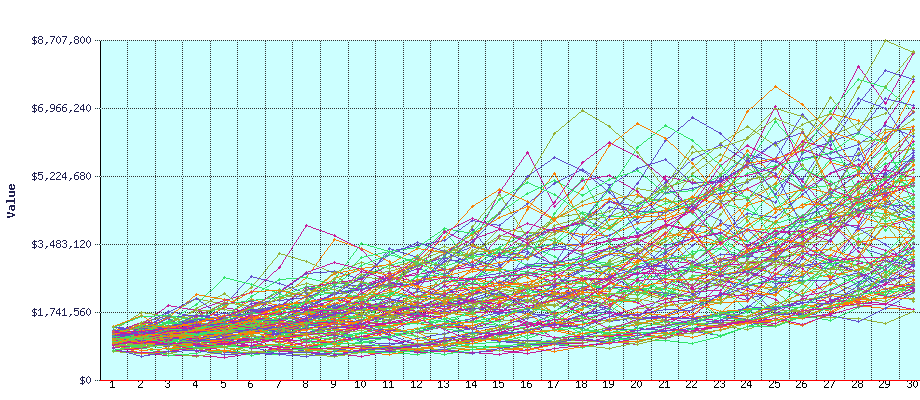Pistachenootje
Confused about dryer sheets
- Joined
- Aug 3, 2022
- Messages
- 5
In the FIRECalc results the lowest portfolio amount at the and of my retirement is the same amount as I entered as Portfolio under 'Start Here'. I assume I am doing something wrong?
I entered the following figures.
Start Here
Spending: 36000
Portfolio: 300000
Full Years: 55
Other Income/ Spending
Pension Income 14928 starting in 2059 inflation adjusted
Pension Income 13200 starting in 2055 not inflation adjusted
Not Retired?
What year will you retire: 2037
How much will you add to your portfolio until then, per year: 21600
All the other pages I did not touch.
I get the result:
Your spending in every year after the first year will be adjusted for inflation, so the spending power is preserved.
Because you indicated a future retirement date (2037), the withdrawals won't start until that year. Your contributions will continue until then. The tested period is 15 years of preretirement plus 40 years of retirement, or 55 years.
FIRECalc looked at the 97 possible 55 year periods in the available data, starting with a portfolio of $300,000 and spending your specified amounts each year thereafter.
Here is how your portfolio would have fared in each of the 97 cycles. The lowest and highest portfolio balance at the end of your retirement was $300,000 to $11,639,754, with an average at the end of $4,988,817. (Note: this is looking at all the possible periods; values are in terms of the dollars as of the beginning of the retirement period for each cycle.)
For our purposes, failure means the portfolio was depleted before the end of the 55 years. FIRECalc found that 0 cycles failed, for a success rate of 100.0%.
I entered the following figures.
Start Here
Spending: 36000
Portfolio: 300000
Full Years: 55
Other Income/ Spending
Pension Income 14928 starting in 2059 inflation adjusted
Pension Income 13200 starting in 2055 not inflation adjusted
Not Retired?
What year will you retire: 2037
How much will you add to your portfolio until then, per year: 21600
All the other pages I did not touch.
I get the result:
Your spending in every year after the first year will be adjusted for inflation, so the spending power is preserved.
Because you indicated a future retirement date (2037), the withdrawals won't start until that year. Your contributions will continue until then. The tested period is 15 years of preretirement plus 40 years of retirement, or 55 years.
FIRECalc looked at the 97 possible 55 year periods in the available data, starting with a portfolio of $300,000 and spending your specified amounts each year thereafter.
Here is how your portfolio would have fared in each of the 97 cycles. The lowest and highest portfolio balance at the end of your retirement was $300,000 to $11,639,754, with an average at the end of $4,988,817. (Note: this is looking at all the possible periods; values are in terms of the dollars as of the beginning of the retirement period for each cycle.)
For our purposes, failure means the portfolio was depleted before the end of the 55 years. FIRECalc found that 0 cycles failed, for a success rate of 100.0%.
Last edited:


